Q
who designed byd seal
The design of the BYD Seal comes from a team led by BYD's Global Design Director Wolfgang Egger, who previously served as Audi's design chief and brings a wealth of luxury car design experience to the table. He's woven the "Ocean Aesthetics" philosophy into the Seal's design, giving it a sleek, sporty look. Take the front end, for example—it draws inspiration from marine life, while the body lines flow smoothly with plenty of tension, creating an overall youthful style that fits perfectly with the avant-garde vibe of electric vehicles. For Malaysian consumers, the Seal's design isn't just about looking good; it also prioritizes aerodynamic performance. That low drag coefficient, for instance, helps boost range, which is especially crucial for EV efficiency in hot climates. What's more, BYD has been actively expanding into right-hand-drive markets in recent years, and the Seal's local adaptations—like charging compatibility—really show the brand's commitment to meeting Malaysian users' needs. If you're into BYD's EV tech, keep an eye on their innovative CTB (Cell to Body) battery integration technology too. This design further optimizes interior space and safety, making it well worth a deeper dive for potential buyers.
Special Disclaimer: This content is published by users and does not represent the views or position of PCauto.
Related Q&A
Q
What Segment Does BYD Seal Belong to?
The BYD Seal belongs to the D-segment cars. D-segment cars are typically mid to large-sized vehicles, well-known for striking a balance between space, comfort, and performance.
The BYD Seal has a body length of 4,800 millimeters, a width of 1,875 millimeters, and a wheelbase of 2,920 millimeters, offering passengers a relatively spacious interior. The trunk space is also quite decent. Such specification makes it suitable for comfortable long - distance trips and can meet the sufficient space requirements for daily use. Moreover, in terms of performance, the Seal provides different versions with various power outputs. It can provide a smooth daily driving experience and also offer a more exciting high - performance driving feel. Whether for family users or individual users who desire more space and better performance in their vehicles, the D - segment BYD Seal is an appealing choice.
Q
What's the Reslae Value of BYD Seal?
The BYD Seal, a relatively new electric vehicle in the Malaysian market, currently lacks complete data on its resale value, but general resale value for EVs can provide some references. Due to rapid advancements in EV technology, the resale value of electric vehicles typically declines slightly faster than that of comparable internal combustion engine (ICE) vehicles in the first three years—around 50%-60% for EVs versus 60%-70% for ICE cars.
Key factors influencing resale value include battery health (BYD offers an 8-year/160,000 km battery warranty), growing brand recognition (BYD has shown strong performance in recent years), and the maturity of EV infrastructure (such as charging network development). Compared to similar ICE vehicles, the BYD Seal's extended battery warranty and lower operating costs (electricity being significantly cheaper than fuel) may help mitigate depreciation.
For prospective buyers, it is advisable to consider certified pre-owned programs and maintain complete service records to preserve resale value. As EV adoption increases, more definitive resale value data will be provided.
Q
What's the Displacement of BYD Seal?
The BYD Seal is an electric vehicle, so it doesn't use the traditional "CC" (cubic centimeters, used to measure internal combustion engine displacement) as a metric. It provides different versions, such as the Dynamic EV, Premium (Extended Range), and Performance AWD. In terms of the powertrain, the Dynamic EV version has a total motor power of 150kW, a maximum horsepower of 204PS, and a total torque of 310N·m. The Premium (Extended Range) version has a total motor power of 230kW, a maximum horsepower of 308PS, and a torque of 360N·m. The Performance AWD version is more powerful, with a combined system power of 390kW, a combined horsepower of 523PS, and a combined torque of 670N·m. These motors can provide efficient and strong power output, meeting different consumers' needs for speed, range, etc. Moreover, the all - electric drive also complies with the current trend of environmental protection and energy conservation.
Q
What's the PCD Size of BYD Seal?
The PCD (Pitch Circle Diameter) of the BYD Seal is 5×114.3, which means the wheel hub has 5 bolt holes evenly distributed on a circle with a diameter of 114.3 millimeters, matching the standard used by many mainstream Japanese vehicles (such as Honda and Toyota). So, it's easy to find compatible wheel hub options for modification or replacement in the Malaysian market.
Beyond PCD, wheel modifications also require attention to other parameters, including the hub bore (recommended to use OEM-concentric hub rings for precise fitting), offset (ET value), and wheel width to avoid affecting suspension geometry or causing friction. For wheel upgrades, it is advisable to choose EV-rated products that can accommodate the Seal's battery weight and prioritize purchasing through BYD-certified channels to ensure safety and compatibility.
Q
Does BYD Seal Support Apple Carplay?
The BYD Seal doesn't have the Apple CarPlay feature. Apple CarPlay is a system developed by Apple Inc., which allows iPhone users to connect their devices to the in-vehicle infotainment system. Although some car models in the market support this feature, the BYD Seal isn't one of them.
However, the BYD Seal has its own advanced infotainment system. It's equipped with a 15.6 - inch intelligent rotating touchscreen, which can provide a wide range of entertainment and vehicle control functions. This car also adopts a comprehensive set of standard configurations, such as various safety systems, comfortable seats with multiple adjustment options, and a high - quality sound system with 12 Dynaudio speakers. Even though the Seal doesn't have Apple CarPlay, its own infotainment capabilities can still bring users a convenient and pleasant driving experience.
Q
What's the Brand of BYD Seal's Tire?
The original tires of the BYD Seal are usually high-performance tires from Michelin or Continental. The specific tire models might be Pilot Sport EV or EcoContact 6, which are optimized for electric vehicles to match its powerful performance and noise reduction requirements. These tires are characterized by a low rolling resistance to improve the vehicle's range, the reinforced structures to handle the additional weight of EVs, and noise-reducing tread patterns to minimize road noise.
If you need to replace the tires, it is recommended to choose EV - specific tires of the same specifications. Pay attention to the size markings such as 235/45 R19 or 245/40 R20 (depending on the specific vehicle configuration), and also consider the wet - surface grip and wear - resistance index. When purchasing, you can go through BYD's official services or authorized tire dealers to ensure you get products that are suitable for the characteristics of electric vehicles.
Q
Is BYD Seal a Good Choice? Learn the Pros and Cons Here
The BYD Seal is a truly outstanding electric sedan that boasts high competitiveness in the Malaysian market. It's equipped with BYD's advanced e-Platform 3.0 technology and efficient Blade Batteries, offering excellent range performance (up to approximately 570 kilometers under the WLTP standard) and fast charging capabilities, which perfectly meet the local long - distance driving needs.
This car stands out with its remarkable power performance. The dual - motor all - wheel drive version can accelerate from 0 to 100 km/h in just 3.8 seconds. The driving experience is comparable to that of high - performance fuel - powered vehicles. Meanwhile, the electric system provides a smooth and quiet ride.
The interior uses high - quality materials and has luxury features such as a 15.6 - inch rotating central control screen and a Dynaudio sound system. It's also equipped with BYD's DiPilot intelligent driving assistance system to enhance driving safety.
As a pure - electric vehicle, it outperforms traditional fuel - powered cars in terms of maintenance costs, environmental - friendliness, and technology equipment. Although the price is not low, compared with other vehicles in the same class (like the Tesla Model 3), it has advantages in terms of cost - effectiveness and local after - sales service. It's a great choice for Malaysian consumers who are looking for high performance and low vehicle - using costs.
Q
What's the Width of BYD Seal?
The width of all BYD Seal variants is uniformly 1875mm. Vehicle width refers to the horizontal distance between the outermost rigid fixed protrusions on both sides within the vehicle's longitudinal symmetrical plane. This width dimension not only influences the visual effect of the vehicle's exterior, giving it a more imposing and stable appearance, but also affects the interior space layout, indicating a relatively spacious lateral cabin area, providing a more comfortable riding experience for both drivers and passengers, particularly ensuring rear occupants do not feel overly cramped. Additionally, during driving, the width contributes to stability to a certain extent, with an appropriate width helping to enhance the vehicle's stability during high-speed driving or cornering.
Q
What's the Road Tax of BYD Seal? How to Calculate It?
Currently, all electric vehicles registered in Malaysia are exempt from road tax, with the tax exemption period set to expire at the end of 2025. Starting from January 1, 2026, the road tax rates for electric vehicles will be calculated in tiers based on the vehicle's motor power:
The first tier applies to EVs with motor power below 100kW, where the tax increases by RM10 for every additional 10kW. The second tier applies to vehicles with 100kW to 210kW, where the tax increases by RM20 for every additional 10kW. The third tier covers EVs with power between 210kW (exclusive) and 310kW, where the tax increases by RM30 for every additional 10kW.
Taking the BYD Seal models as an example:
The 2024 BYD Seal Dynamic EV, with a total motor power of 150kW, falls under the second tier. Since it exceeds 100kW by 50kW, the road tax is calculated at RM20 per 10kW, resulting in RM100.
The 2024 BYD Seal Premium (Extended Range), with a total motor power of 230kW, falls under the third tier. Exceeding 210kW by 20kW, the road tax amounts to RM60.
The 2024 BYD Seal Performance AWD, with a total motor power of 390kW, also falls under the third tier. Exceeding 210kW by 180kW, the road tax is calculated at RM540.
Q
What‘s the Oil Capacity of BYD Seal's Engine?
The BYD Seal is an electric vehicle (EV), so it doesn't require engine oil but is powered by electric motors.
The three variants of the BYD Seal, namely the 2024 BYD Seal Dynamic EV, 2024 BYD Seal Premium (Extended Range), and 2024 BYD Seal Performance AWD, all run on electricity. They adopt battery systems like the BYD Blade Battery or Lithium iron phosphate battery for energy storage, and electric drivetrains.
For EVs, maintenance focuses more on battery health, charging system checks, and the condition of electric components rather than engine oil changes, making them more environmentally friendly and often require less frequent maintenance compared with traditional gasoline or diesel-powered cars.
Latest Q&A
Q
How much is a Toyota Corolla Cross hybrid?
The Toyota Corolla Cross Hybrid currently starts at around RM137,000 in Malaysia, with prices varying depending on the trim level and specifications. For instance, the 1.8L Hybrid variant can get pricier when equipped with premium features like a panoramic sunroof and power tailgate.
Under the hood, it’s packing Toyota’s tried-and-tested hybrid system, pairing a 1.8L petrol engine with an electric motor. This setup delivers a smooth driving experience and impressive fuel efficiency – Toyota claims around 4.3 liters per 100 km, which is perfect for Malaysia’s stop-start city traffic.
As a compact SUV, the Corolla Cross Hybrid offers decent space, with a boot that’s more than enough for everyday family use. It also comes standard with Toyota Safety Sense (TSS), featuring handy tech like pre-collision warning and lane-keeping assist, so you’re covered when it comes to safety.
One big plus? Hybrid models in Malaysia qualify for government tax exemptions, which helps bring down the initial purchase cost. And in the long run, you’ll save big on fuel too. If you’re all about value and eco-friendliness, this one’s definitely worth a look.
Q
How to open the hood of Toyota Corolla Cross?
To pop the hood of a Toyota Corolla Cross, start by locating the hood release lever down by the driver's left foot, usually near the pedals. Give it a pull, and you'll hear a faint click as the hood pops open slightly. Then head to the front of the car, reach into the gap at the center of the hood's leading edge, and find the secondary safety catch—it's typically a small lever or button. Gently lift or press that while raising the hood; if it feels a bit heavy, use the prop rod to hold it open.
Now, as one of Toyota's key SUV players in Malaysia, the Corolla Cross's hood is designed to balance lightness with safety. When you're checking oil, coolant, or the battery, it's smart to do it when the engine's cold to avoid any accidental burns. Also, make sure to keep the hood latch mechanism lubricated every now and then so it opens and closes smoothly. With Malaysia's hot and rainy weather, the engine bay can get pretty toasty after a long drive—best to wait 10-15 minutes before popping the hood to keep both you and the car safe.
Q
How to open the gas tank of Toyota Corolla Cross?
To open the fuel tank cap on a Toyota Corolla Cross, first make sure the vehicle is switched off. Then, locate the fuel door release lever near the driver's left floorboard—give it a gentle pull to unlock the fuel door. After that, just press the outer side of the fuel door and it'll pop open. A quick heads-up: some models might feature a capless fuel system, where you can simply insert the fuel nozzle right in—super convenient stuff.
Living with Malaysia's hot and rainy weather, it’s smart to regularly check the fuel cap’s seal to keep rainwater or dust from getting into the tank, which could mess with engine performance. Also, Corolla Cross models from different years might have slight variations in how you open the fuel door. If you run into any issues, your owner’s manual or a Toyota authorized service center should have the answers.
For those who often hit the highway, knowing the tank capacity (around 47-50 liters) and recommended fuel type (RON 95 is the way to go) is key. It helps you plan refuel stops better and keeps the engine running in top shape.
Q
How many cylinders in Toyota Corolla Cross?
In the Malaysian market, the Toyota Corolla Cross gasoline variant comes equipped with a 1.8-liter 2ZR-FE naturally aspirated engine, featuring an inline-four cylinder layout. The hybrid version, on the other hand, pairs a 1.8-liter 2ZR-FXE Atkinson-cycle four-cylinder engine with an electric motor. So whether you opt for the conventional petrol or hybrid setup, this SUV sticks with a four-cylinder configuration.
For Malaysian buyers, four-cylinder engines strike a solid balance between smoothness and fuel efficiency, making them ideal for both urban commutes and long-distance drives here. It's worth noting that four-cylinders are the go-to choice in the compact SUV segment – they vibrate less than three-cylinder units, offer better fuel economy than six-cylinders, and come with lower maintenance costs. That's part of why the Corolla Cross maintains such a strong reputation for reliability.
If you're focused on performance, the 1.8-liter petrol model delivers 138 horsepower and 172 Nm of torque. The hybrid version, meanwhile, has a combined system output of 122 horsepower, with the electric motor's instant torque giving it an edge off the line. Given Malaysia's hot climate, it's advisable to regularly check the cooling system and engine oil condition to keep that four-cylinder running strong. Plus, Toyota's 5-year unlimited mileage warranty provides extra peace of mind for owners.
Q
How to replace the battery of key of Toyota Corolla Cross?
Here's how to swap out the battery in your Toyota Corolla Cross key fob: First off, grab a CR2032 coin battery – that's the standard type for most Toyota keys, and you can pick one up easy enough at convenience stores or electronics shops around Malaysia. Next, take a small screwdriver or even a coin, stick it into the little groove on the side of the key, and give it a gentle twist to pop open the case. Carefully remove the old battery, making sure to note which way the positive (+) and negative (-) sides are facing. When popping in the new battery, double-check that the positive side is facing up. Snap the case back together and test the key to make sure everything works like normal.
It's a good idea to replace the battery every 2-3 years as a general rule. If it still doesn't work after swapping the battery, there might be an issue with the key's circuitry – best to head to an authorized Toyota service center to get it checked out. Day-to-day, try not to leave the key sitting in really hot or humid spots for ages, since that can drain the battery faster. For models with the smart key system, you might need to resync the key after changing the battery – just flip through your owner's manual for the exact steps on that. With Malaysia's hot weather, giving your key battery a regular once-over is a smart move to avoid that annoying "dead key" moment when you least expect it.
View MoreRelated News

2025 BYD Seal Coming to Malaysia with DiSus-C Adaptive Suspension
JohnAug 13, 2025
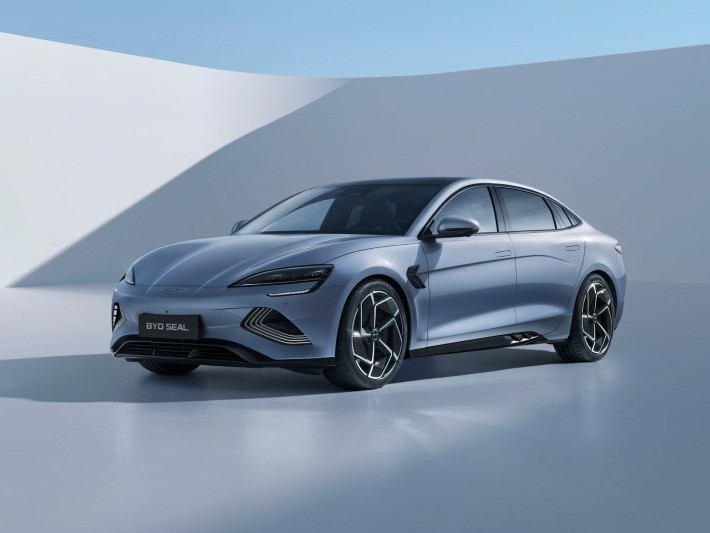
BYD Seal interior design revealed: A fusion of modern technology and luxury
RobertJul 15, 2025
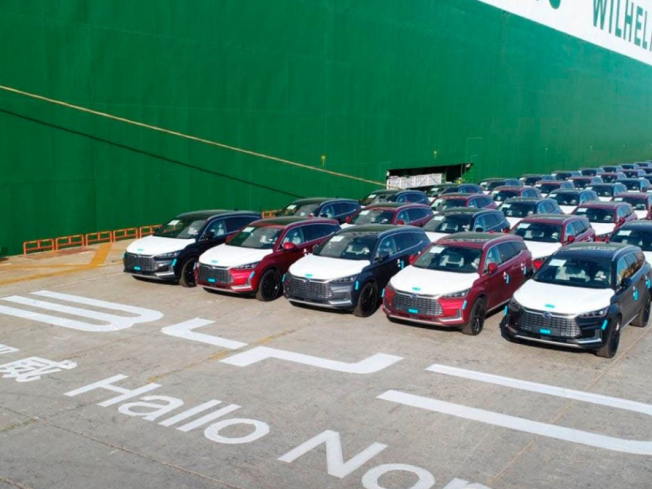
BYD Exports 214K Vehicles in Q1, Top Sales in 7 Markets
RobertApr 30, 2025
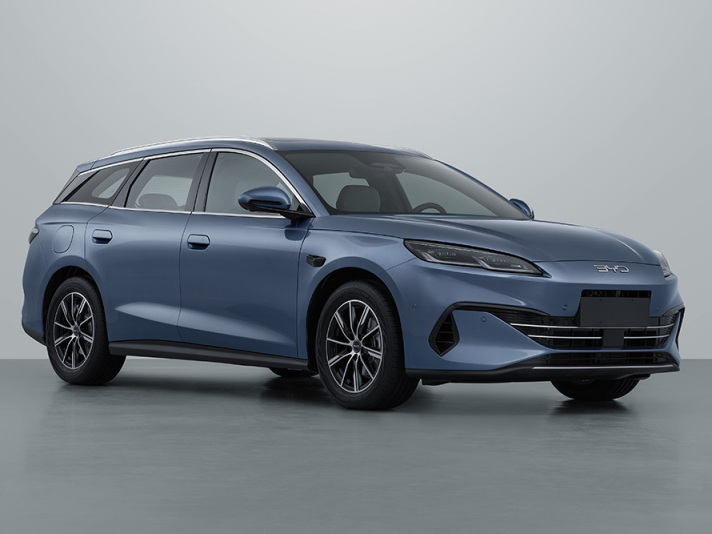
Photos of the BYD Seal 06 Touring Edition Reveal the Brand's Entry into a New Niche Market
JamesMar 24, 2025
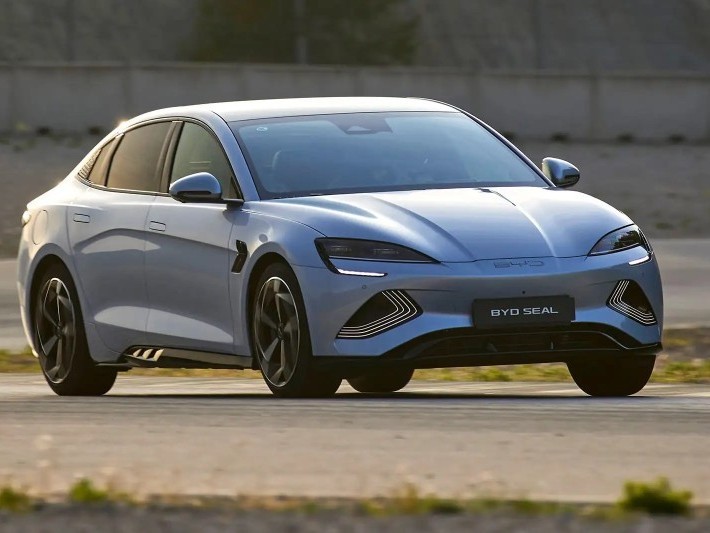
BYD Wins Japan's Annual EV Award Again with Seal
MichaelMar 6, 2025
View More



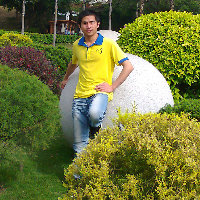
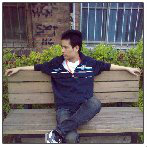
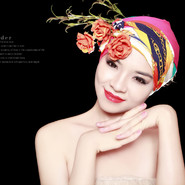

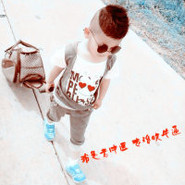




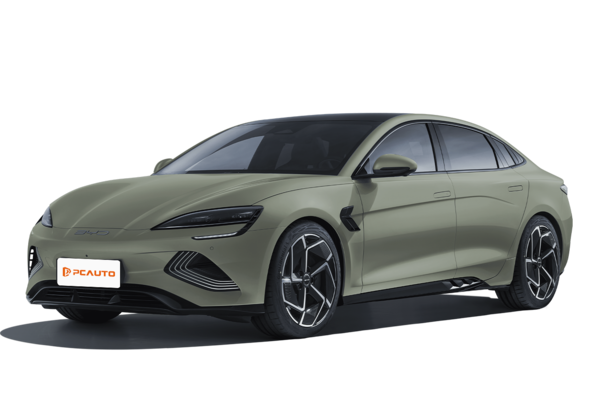
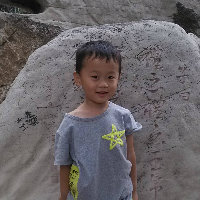
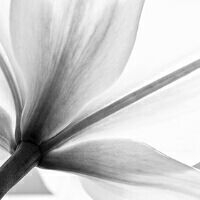


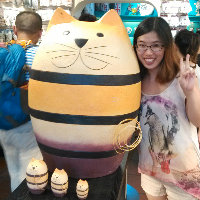
Pros
Cons